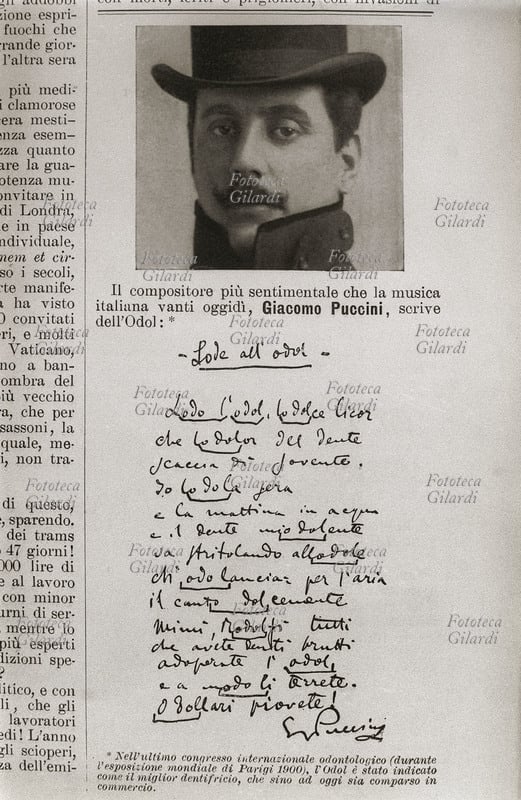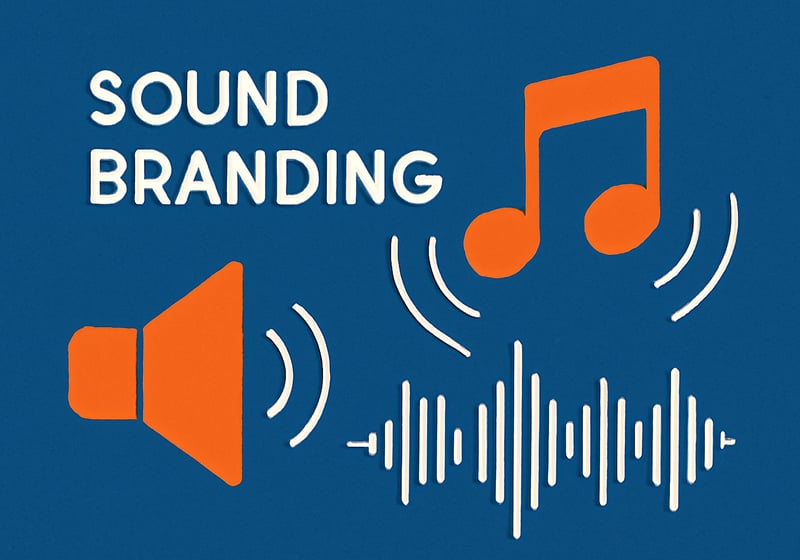Table of Contents
I have noticed growing interest in recent years around the topics of sound branding and sonic strategy.
Sound branding, also known as audio branding, is all about making your business recognisable through sound.
It comes under the wider concept of the brand voice: the arsenal of ways, tools and means a business has at its disposal for speaking to audiences.
Since this is new territory for many businesses and brands, I think it is worth investigating here in some detail. I’ll give you some historical notes, interesting facts, case studies and best practices, so you can include it in your business’ communication and marketing plans if it appeals.
Why is sound so effective in marketing?
It is easy to see why sound is so powerful in marketing and branding. As humans, we rely on our five senses to understand the world around us. And this includes when we interact with a brand as customers.
- Branding tends to focus on a product’s visual attributes, since sight is the sense we use most immediately.
- But various studies have shown that sound is also an extremely important sense, with the power to create automatic visual images and projections.
More specifically, there are three main advantages to using sonic assets in corporate communication:
- they provoke a rapid and deep emotional response;
- they grab and maintain consumers’ attention;
- they stand out effectively in a multi-screen world.
Think about it: if you hear a moo, a cow pops into your head before you even see it.
From brand voice to sound branding. A brief cultural history
The advent of radio and audio advertising
The marketing of goods and brands began in earnest in the 1920s, when forward-looking members of the middle and upper-working classes began to aspire to achieving more than just subsistence living, and starting looking to buy non-essential items. But the sector developed even more rapidly when the media expanded beyond the written word: radio, followed by the introduction of sound at the cinema, gave advertising a voice for the first time.
Advertising’s escape from the limitations of posters, billboards and press ads coincided with words taking on growing importance.
Radio gave advertising’s words a voice, and highlighted its potential to evoke emotions. Advertisers recognised the value of text and the pleasure it could inspire, and so sought high-quality copywriting: words that sounded good. And radio provided the perfect medium for this combination.
Many ads from this period sound rather amusing to a modern reader. But there were some big names involved, either providing poetic inspiration or suggesting names for products and brands that would end up in households nationwide. For example, the Italian composer Giacomo Puccini wrote a poem for Odol, an Italian toothpaste!

While paper-based advertising established the concept of branding, radio announcements allowed items to speak, bringing them to life and making them resonate with consumers.
Sonic content – both voice and music – provided an original mix that perfectly suited advertising’s needs:
- Radio programmes were often sponsored (the main boxing matches in the USA, for instance, beginning with the epic showdown between Jack Dempsey and Gene Tuney in 1927, were sponsored by Gilette).
- Concerts were the perfect accompaniment for product storytelling, giving brands a desirable sound.
In the 1920s, before commercials were commonplace, the jingle – a musical motif that accompanies, reinforces or ends an advertisement, often accompanied by a rhyming or memorable phrase – struck immediately and inexorably as soon as goods’ voices started to be heard on the radio.
America in those years was still at the forefront of the sector – programmes started to be interspersed with adverts, many accompanied by jingles.
The jingle rapidly gained traction because it got around a ban on direct advertising imposed by the National Broadcasting Company, the country’s leading broadcaster. A jingle helped potential customers to remember a brand name, without coming under the NBC’s definition of advertising.
Another reason for its quick spread and adoption into brand strategy was Wheaties cereal‘s success with this new type of advertising. General Mills had previously decided to halt production of the product, but the song Have You Tried Wheaties? broadcast on radios across Minnesota performed incredibly well, convincing the company to continue production and to employ the same technique in a national campaign, which was soon imitated by the firm’s competitors and other large consumer brands.
The arrival of television
Now let’s jump forward a few decades, to the 1980s and 1990s. With TV now highly commercialised, the music used in advertising completely changed register. Instead of relying solely on music composed specifically for advertising, brands increasingly turned to famous songs sung by famous singers.
An exceptional example of this was Microsoft’s use of the Rolling Stones song Start Me Up, which it turned into the theme song for Windows 95.
Web and social media. Advertising’s new sonic identities
It has long been widely accepted that a successful radio commercial must include the right tones and be at the correct decibel level, and that each brand or product must have its own, unique sound, a special musical motif or exclusive theme tune.
In an era of vastly reduced brand loyalty, reaching consumers and ensuring your name is embedded in their memory is no longer just the most important thing – it is the only thing that counts.
This has pushed companies to invest increasingly large budgets into creating coherent sound identities and instantly recognisable and distinctive musical effects: audio signals that translate into sound branding. In radio commercials or the audio-video materials that circulate on various platforms, the brand’s sound reinforces – and in some cases almost replaces – its images. instead of displaying a brand’s image (e.g. its logo and slogan), sound branding has to evoke the brand’s values and convey its spirit.
From brandscape to soundscape
The brandscape – the landscape in which the brand is brought to life and displayed – therefore becomes a soundscape – a sonic landscape generating auditory experiences that seek to consistently and evocatively convey the brand’s image.
The soundscape includes a series of touchpoints, which I will now list, along with a brief description of each one:
Sound Logo / Trademark. The key aspect of every sonic asset: a musical motif, jingle or simply a sound that is paired with the company logo to make it stand out and be recognisable based purely on that specific sound. It should showcase the brand’s main characteristics in sonic form.
According to many production companies and sound branding experts, Intel’s sound logo is the most memorable one ever created. Composed by Austrian musician Walter Werzowa in 1994, it was the first to be legally registered as a sound trademark.
According to some estimates, this memorable five-note sequence is played somewhere in the world every five minutes.
As part of its Intel Inside campaign, the firm asked Werzowa to create a sound that conveyed ‘reliability, innovation and trust’. The musician spent 10 days composing the Intel Spiral (later to become known as the Intel Bong) using a combination of synthesisers, xylophones and marimbas. While it may sound simple, the sound logo actually comprises 20 different layers of audio.

Werzowa’s composition is unique and timeless, and features the perfect balance of computerised and physical sounds. When Intel launched its global rebranding in 2020, the sound logo was still there, just slightly updated and more computerised.
Event Sound. A specially selected soundtrack to a special event, designed to create an atmosphere that is fully aligned with the brand’s values, to touch participants deeply and give the event a strong personality. Musical events based on immersive technologies like virtual reality and extended reality offer both engaging audio experiences and original interactions between artists and their audience.
Businesses can also create a Branded Song – a piece of music that reflects their values and DNA. This applies to everyone, including small and medium-sized companies. Take this example developed for Molino Pasini (a company that specialises in producing high-quality soft-wheat flours) inspired by the sounds produced by flour:
Corporate Sound Rooms. Certain indoor corporate spaces, like showrooms and visitor centres, use sound to heighten people’s sensory experience, fully immersing them in the brand’s sonic world.
Music Streaming Playlists. Creating and managing personalised and culturally relevant playlists for experience-focused brands, including launching and maintaining company profiles on all online streaming platforms. These can also include soundscapes designed for specific purposes:
- Sport & Workout Music. Music created or selected to improve performance during a training session, by reducing the brain’s recognition of fatigue or muscle pain. It also targets the brain’s pleasure centres, making exercise more pleasurable and spontaneous.
- Workplace Music. The creation of original music or playlists for the workplace, intended to improve productivity without creating distractions, while also reinforcing the business’ style and distinctive spirit.
It is worth noting the new horizons that generative AI may open up in this area: Spotify, for example, has been working for months on AI Playlists, which users (and therefore also brand designers) can develop based on prompts using text-to-music technology.
Product & UX Sound. Acoustic design and engineering of sounds and effects based on a user-centred strategy, with the aim of facilitating and improving the user’s experience with a product, interface or device.
Web & Social Media Music. Music and sounds that increase engagement and improve the experience on websites and social media. Users are more likely to click through to or browse pages if they are accompanied by carefully selected music that is in line with their expectations of the brand. However, according to Amp’s research on the best audio brands, it seems this is not being taken up by businesses, who still struggle to identify a single, consistent musical background for their digital and social channels.

Music for TV / Radio Ads. Music and sounds that increase engagement and improve the experience of TV and radio advertising. All carefully designed to align with the brand’s sonic identity.
Branded / Corporate Podcasts. Podcast content that explicitly or implicitly conveys commercial information, creating a relationship with the user that communicates the brand’s values through a strategic combination of sounds, music and words.
Takeaways
There is no doubt about it: the history of business communication – which has seen sounds take on an increasingly vital role – and the sonic ecosystem (or soundscape) with its myriad sonic touchpoints show that sound is (at least to some extent) the future of marketing.
Research into the correlation between music and human experiences shows that music is good for people in every dimension: as consumers, as colleagues and employees, and so on. This is partly because audio is permeable, providing a channel that is always open.
In the near future, the countless possibilities offered by artificial intelligence are sure to further enhance the potential for using people’s sense of hearing to make a difference.
Keep your ears open!

